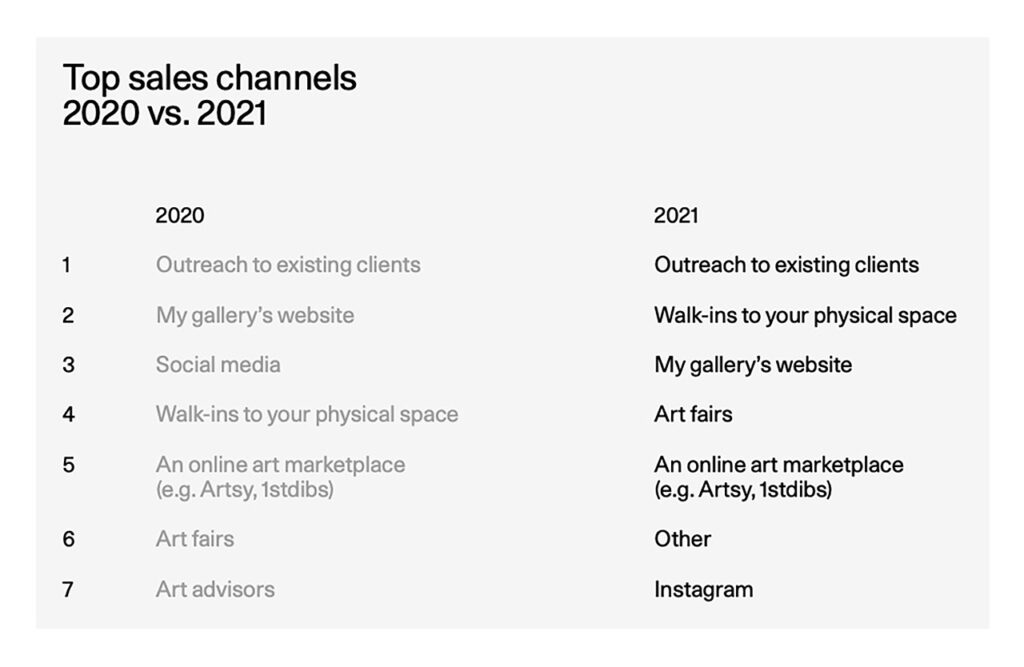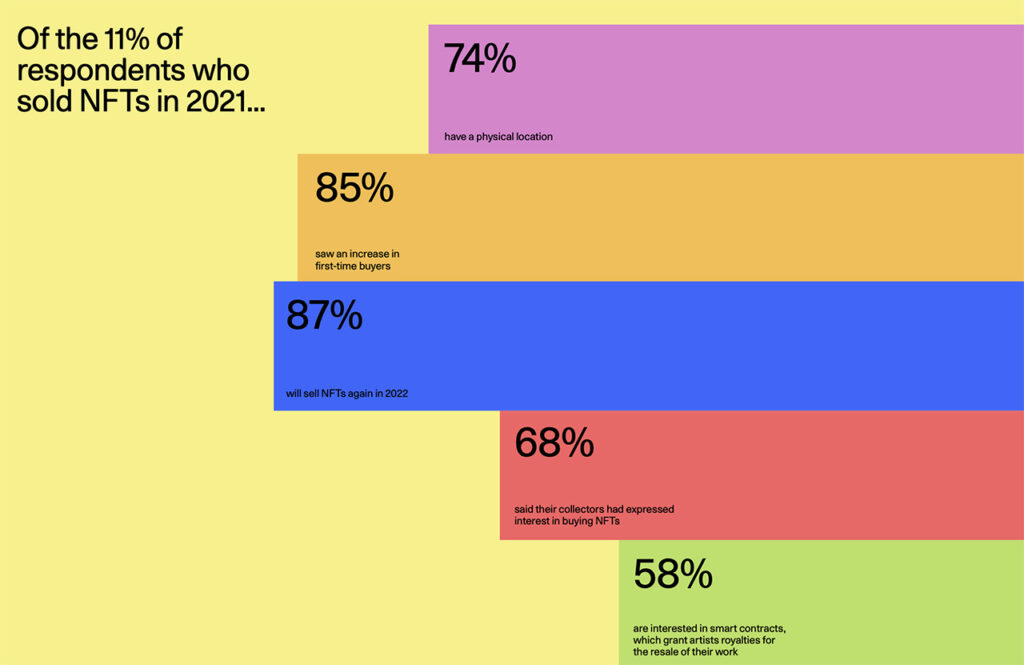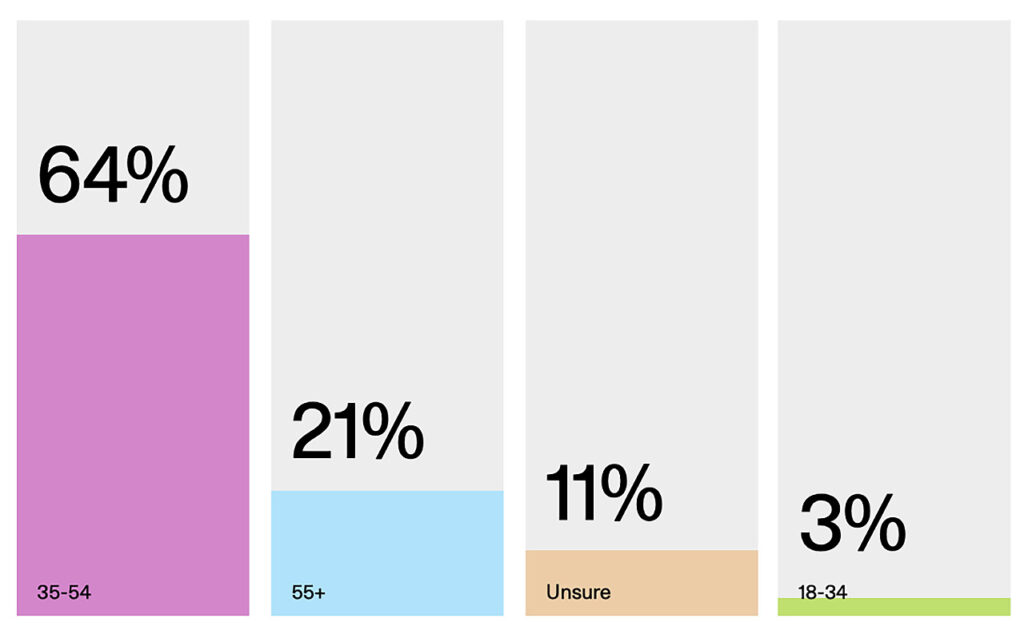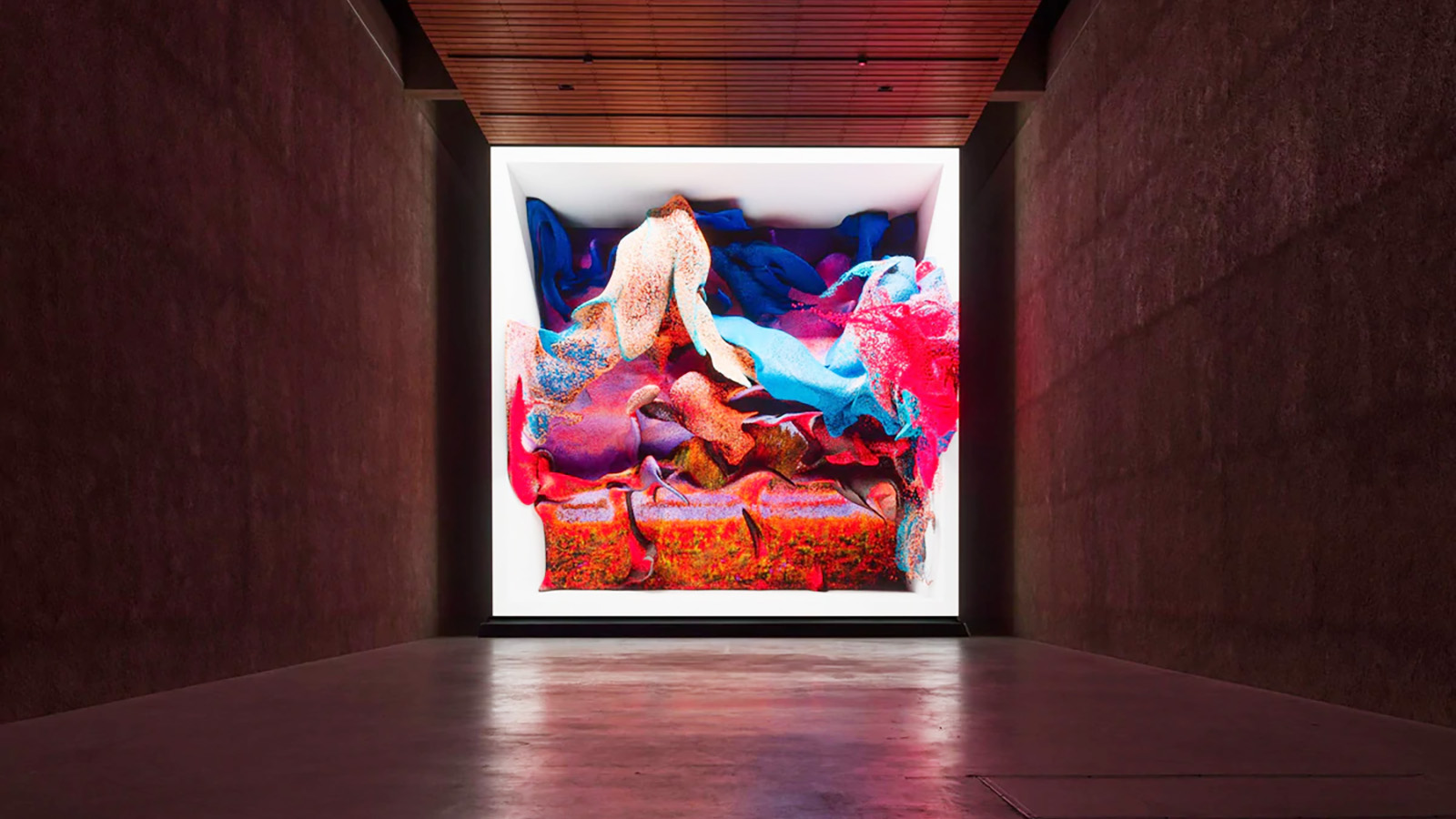When NFTs rose in profile in 2021, art galleries were swift adopters. Being more nimble than cultural institutions, galleries such as Almine Rech launched into NFT commerce, while others including Pace, Unit London, and Lehmann Maupin have since established dedicated platforms from which to sell digital works. As Steven Sacks of bitforms, quoted in the 2022 Artsy Gallery Insights report, noted, “[The NFT boom] opened up the market to millions of people who now look at a digital piece of art as legitimate.”
But a year on, what impact have NFTs really made in the gallery sector, in terms of sales and audience development? Short answer: not all that splashy, according to Artsy’s fifth annual survey of the art industry. Collating 873 responses from galleries in 84 countries, the report tracked what digital art has meant for art galleries, in addition to how post-lockdown reopenings have spurred online sales and collecting habits in 2021. Read on for some notable findings.
Sales climb across platforms

In 2021, with reopenings in full swing, surveyed galleries reported walk-ins and in-person events like art fairs returning as key sales channels. Image: Artsy Gallery Insights 2022
Unshockingly, with the return of physical events, sales have risen for galleries. Some 20 percent of respondents to the 2022 survey reported walk-ins as their most lucrative avenue for sales, with 36 percent pointing to in-person events like art fairs being the year’s most successful sales channel.
In tandem, online sales have continued to climb: 64 percent of respondents said their digital sales have increased in 2021, while more than 40 percent noted that their websites and social channels were key in helping them reach new buyers. No doubt, the pairing of in-person with online platforms has paid off for galleries (and collectors seeking to discover and buy art), guaranteeing a long shelf life for hybrid sales strategies.
NFTs in the gallery

Among the surveyed galleries, only 11 percent said they sold NFTs in 2021, among which, the majority are planning to sell NFTs again in 2022. Image: Artsy Gallery Insights 2022
For all the fanfare surrounding digital art’s arrival on the gallery scene, Artsy’s survey found that a little more than a tenth of respondents sold NFTs in 2021. Of those galleries, about half said that the total sales volume generated by NFTs was $5,000 or less, while only 5 percent reported earnings over $250,000. Cryptocurrency adoption also remains slow among galleries: 30 percent expressed interest in embracing digital currency in the future, with Rachel Lehmann of Lehmann Maupin reflecting that “only a handful of clients” have paid in crypto since the gallery began accepting cryptocurrency in the summer of 2021.
NFTs, however, are set for growth in the sector, with a quarter of respondents logging their plans to sell digital art in 2022, and more than half saying they’re working on smart contracts that would provide artists with royalties through resales. Still, as Galerie Nagel Draxler’s Saskia Draxler underscored in the report, the NFT’s position in the art world is heavily contingent on sustainable blockchain technology — as well it should. “If this is not resolved,” she noted of the medium’s sizable carbon footprint, “it doesn’t have a future.”
The collector equation

In line with shifts in sales channels, the majority of galleries are report the average age of their customer is between 35 and 54 — a demographic that is emerging as a force in the art market. Image: Artsy Gallery Insights 2022
With online and NFT sales in play, younger collectors continue to dominate the buyer pool. More than half of respondents described collectors aged between 35 to 54 as the most important to their business; conversely, only 21 percent of galleries reported an average customer age of 55 or older.
The report also found tentative mingling between traditional and NFT art buyers. Some 68 percent of surveyed galleries said their collectors had expressed interest in purchasing NFTs, but, at the same time, 67 percent reported that their clients had not asked about collecting digital work.
For the twain to meet — for traditional buyers to acquire NFTs and for crypto natives to collect canvas — takes effort on the part of the sellers, it seems. In interviews, galleries such as König and Pace, which head up their own NFT platforms, describe efforts to “hand-hold” traditional collectors as they make their first NFT purchase, and engage crypto collectors via channels such as Twitter and Discord. “In theory, it’s no different from client development,” said Christiana Ine-Kimba Boyle, Pace’s Director of Online Sales, “trying to learn exactly what they like and what they may want.”



